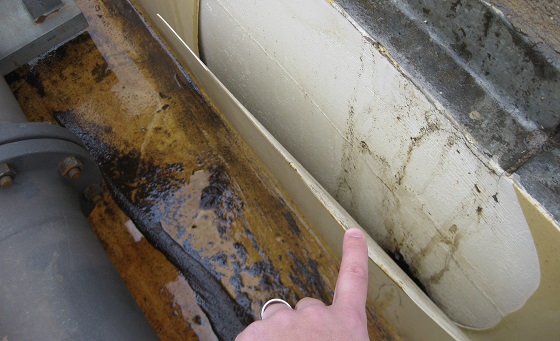Concrete is the most durable, widely used manmade material in the history of mankind. You don’t have to look much further than the Roman Colosseum for proof.
The origin of concrete is unclear but largely believed to be around 1300 BC, somewhere in the Middle East. It was widely used and perfected by the Romans until the fall of the Empire, when the technology disappeared into the gloom of the European Dark ages.
“Invented” again, Portland cement was formally patented in 1824 by Joseph Aspdin. And that brings us to today.
The Good
I sometimes think of concrete as a little toddler at the zoo. As long as they’re having fun, life is good. But watch out for when that sugar high drops and you’re left with an afternoon temper tantrum. Let’s start with the fun part first.
With concrete being the most widely used material in the world, it makes sense that it is also among the most studied and well understood. The specifications and standards associated with the manufacturing of concrete cover literally thousands of pages — from field slump tests to air-entrainment protocols and admixtures. The list is endless.
An article on the benefits and specifications associated with concrete alone would span hundreds of pages. The good news is that, during construction, if specifications and standards are followed, our little toddler does quite well. Specify the right concrete mix, install it where it belongs, and you have a happy slab — and happy client.
The Bad
Nearly all of the failures associated with concrete revolve around misunderstandings about the fundamental nature and characteristics of concrete after it’s been poured.
To be clear, you get failures with a bad pour or mix from the supplier, but those are far less common. Far more often, the problem with concrete is either that it wasn’t used properly or that it was put into service that it was not designed for.
While concrete has many limitations, I would argue the most commonly misunderstood characteristic is the degree to which concrete is porous. That is: concrete breathes.
I worked on a massive concrete trench that was coated one summer. Within months, there was a substantial failure due to, among other reasons, a lack of a moisture barrier behind the concrete, which was coated. That lead to blisters the size of pillows under the coating that were filled with water, which, when popped, shot water out as if from a faucet.
Both liquid and vapors will pass through concrete. This characteristic is key.

When we developed a remediation plan for the severely blistered concrete coating, we had the contractor remove the failed coating and then we specified that all coatings be installed during declining temperatures, so that the coatings would be “inhaled” into the concrete as it cooled.
We performed a mock-up in declining temperatures for the contractors to follow. Two weeks later, massive blisters started showing up only a day after remedial coating installation. We came to find out that the crew doing the work didn’t believe me about concrete breathing, and they thought that applying it in cooling temperatures was hog wash (though they used a much more descriptive term). They applied the material in the morning, and it blistered that afternoon.
Which brings us to…
The Ugly
One word: Contamination.
Because concrete is porous, it will absorb whatever liquids or gases it comes into contact with. And depending on the contaminant, it can be exceedingly difficult to remove from the concrete.
I’ve had dozens, perhaps, hundreds of conversations with firms that were getting ready to pour new concrete and asked for my advice on how, or if, to coat it.
I had a client in Europe, for example, that was ready to spend nearly a million dollars coating the inside of a large concrete tank. We conducted a peer review and determined there was no reason at all to coat the tank, saving them a million dollars for a few hours of our work.
But with new concrete, you often have only one shot to it get right. Because once it’s in service, or coated, that material penetrates into the concrete and getting it out may be, in some cases, impossible, or, at the very least, substantially more costly.
Because concrete is so widely used, we sometimes take it for granite (yes, pun intended), in terms of how we expect it to perform. As with our little toddler at the zoo, we need to keep an eye on it. We never know what kind of trouble it’s going to get into.

About the Author
 Warren Brand heads Chicago Corrosion Group, a leading vendor-neutral consultancy. Brand’s career has covered more than four decades. He has owned an industrial tank lining and coating firm and has written dozens of blogs and technical articles in a variety of publications. He has managed thousands of coating installation projects and developed specs for thousands of paint and coating applications. Brand, who is a certified NACE Level 3 and The Society for Protective Coatings (SSPC) protective coating specialist (PCS), has earned an MBA and is a martial arts aficionado. For more information, contact: Warren Brand, warren@chicagocorrosiongroup.com
Warren Brand heads Chicago Corrosion Group, a leading vendor-neutral consultancy. Brand’s career has covered more than four decades. He has owned an industrial tank lining and coating firm and has written dozens of blogs and technical articles in a variety of publications. He has managed thousands of coating installation projects and developed specs for thousands of paint and coating applications. Brand, who is a certified NACE Level 3 and The Society for Protective Coatings (SSPC) protective coating specialist (PCS), has earned an MBA and is a martial arts aficionado. For more information, contact: Warren Brand, warren@chicagocorrosiongroup.com